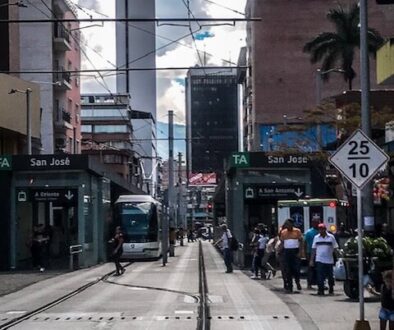The Western Bridge, Very Old Bridge Built by a Drunk Engineer .
Close to the Historical Town of Santa Fé de Antioquia, The Western Bridge, One Hour From Medellin.
Santa Fe de Antioquia is a historic town located in the Antioquia department of Colombia, approximately 60 miles northwest of the city of Medellin. The town was founded in 1541 by Spanish conquistador Jerónimo Luis Tejelo, and was named after Saint Francis of Assisi.

Santa Fe de Antioquia has played an important role in the development of the region throughout its history, serving as a major center of commerce and trade. The town was a major producer of gold in the 18th and 19th centuries. The gold was mined in the nearby hills and transported along the Cauca River to the port of Buenaventura on the Pacific coast.
The construction of the Western Bridge was a major undertaking that required the efforts of many skilled workers and engineers.

The construction of the Western Bridge, which began in 1887 and took over a decade to complete, faced numerous challenges, including the rugged terrain and frequent flooding of the Cauca River. Despite these hurdles, the dedicated workers persevered and finally completed the bridge in 1894.
The Legend of the Drunk Engineer, José María Villa
A persistent myth surrounds the bridge, focusing on its chief engineer, José María Villa, who was reputedly frequently inebriated. The situation escalated to the point where the central government dispatched a team of engineers to replace him. They met with him on a riverbank, requesting the construction plans. Allegedly, José María Villa complied and sketched the plans in the sand with a stick. When the other engineers protested, expressing their desire for paper prints of the bridge’s construction plans, José María Villa claimed to have misplaced them and humorously pointed to his head, suggesting they were all stored there.
The central government engineers had no choice but to return empty-handed, allowing José María Villa to continue with the bridge’s construction. And his drinking.
The Cattle Weight Test
Persistent concerns and rumors abounded regarding the bridge’s structural integrity. So, on inauguration day, a substantial crowd gathered, but apprehension prevented anyone from crossing the bridge. The story unfolds with José María Villa, alongside his wife, children, and a bottle of firewater, walking to the middle of the bridge. He then directed cattle onto the bridge from both sides until it was completely filled with animals from end to end. In the center, José María Villa and his family stood, smiling and waving, albeit a bit tipsy. This display decisively quelled any doubts about the bridge’s strength.
The Western Bridge, despite its tumultuous history and the various myths surrounding it, has become a significant tourist attraction in Santa Fe de Antioquia. Since December 27, 1895, the bridge has endured and continues to facilitate the passage of cars, people, and cattle on a daily basis. It ranks among Colombia’s longest suspension bridges, providing breathtaking views of the surrounding landscape. Visitors can leisurely stroll or ride bicycles across the bridge, with many coming to witness the mesmerizing sunsets from this iconic structure.

The Western Bridge also plays an important role in the region’s transportation network in addition to its historical and cultural significance The bridge provides a vital link between Santa Fe de Antioquia and the surrounding towns and cities. It is a crucial part of the region’s economic and social infrastructure.
Overall, the town of Santa Fe de Antioquia and the Western Bridge are important parts of Colombia’s rich cultural heritage. They stand as a testament to the ingenuity and determination of the people who built them and continue to be an important part of the region’s history and identity.





